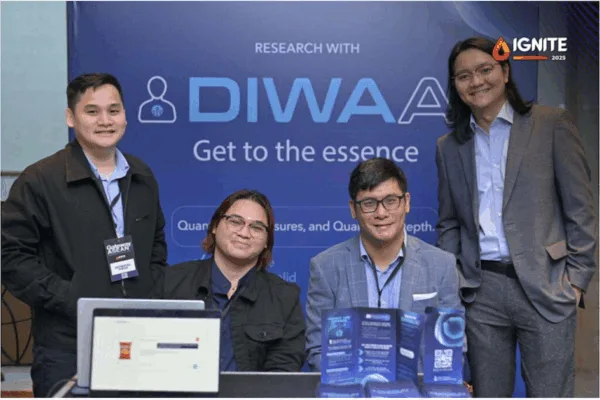Amazon Web Services (AWS) unveiled a robust lineup of cloud security solutions with AI-Driven Innovations at the re:Inforce 2025 APJ Security Briefing, demonstrating how it helps organizations proactively detect, respond to, and prevent emerging cyber threats. By integrating generative AI into its security architecture, the cloud giant empowers customers to strengthen resilience, reduce operational burden, and scale securely across cloud and hybrid environments.

AWS is actively embedding generative AI in its internal security tools to accelerate how it analyzes threats and deploys countermeasures. Customers and partners are following suit — leveraging Amazon Bedrock and Amazon Q to automate threat detection, streamline remediation, and build scalable AI solutions.
During a media briefing held last July 8, Bryce Boland, Head of Security Solution Architecture for APJ at AWS, shared insights into how these advancements are transforming cloud security. He emphasized the practical benefits for organizations.
“We hear customers clearly — they want to manage security at scale and respond faster,” he said. “With generative AI, we’re helping them move faster, operate smarter, and stay secure.”
Boland also highlighted the critical need for robust solutions in today’s landscape.
“Our customers are all demanding to have the most resilient solutions possible,” he stated. “And so we’re very focused on ensuring that our AWS cloud is resilient, and that our customers can easily build and deploy resilient applications on the cloud.”
Addressing the industry-wide talent shortage, he added, “Our customers also tell us that it’s really hard to find skilled people, and so they’re looking for ways to manage their security at scale and cost-effectively.” This focus on ease of use and automation is evident in recent announcements of the company.
AWS’s powerful new tools and updates enhance cloud security operations through AI-powered automation and visibility

- AWS Security Hub — AWS launched the preview of Security Hub, giving security teams a unified view to detect, prioritize, and respond to critical threats. The service actively correlates and enriches data from multiple sources, turning scattered signals into high-value, actionable insights. This allows organizations to scale their response efforts and reduce time-to-remediation.
- AWS Shield Network Security Director — AWS unveiled a new dashboard-driven service that gives teams automated visibility into their network security posture. Shield Network Security Director maps out network topologies and identifies misconfigurations, enabling faster analysis and resolution of potential risks. Users can also interact with the platform using natural language via Amazon Q Developer.
- Amazon GuardDuty Extended Threat Detection for EKS — AWS expanded GuardDuty’s capabilities by adding support for Amazon EKS. The service now analyzes container activity and maps it to the MITRE ATT&CK framework to detect potential threats, such as suspicious command executions or unauthorized access to cryptomining pools. This update equips teams with deeper insights into container workloads.
- Amazon Inspector Code Security — AWS enhanced Amazon Inspector to support third-party code repositories, including GitHub and GitLab. The tool continuously scans codebases for vulnerabilities and provides developers with direct, actionable recommendations. It also feeds findings back into the Inspector dashboard, streamlining vulnerability management across the development lifecycle.
With these updates, the company continues to push the boundaries of cloud security—empowering teams to respond faster, automate more, and stay ahead of evolving threats.
Organizations across APJ are already seeing results. In Singapore, Singlife migrated fully to AWS within 18 months, deployed over 150 guardrails, and reported zero downtime, cutting operational costs by US$5 million annually. In the U.S., Affirm reduced alert fatigue by 50% after streamlining its security operations with the cloud giant’s managed detection and response tools.
Today, the company continues to prioritize resilience. Between January 2022 and June 2024, its cloud infrastructure in APAC achieved 99.5% uptime, 2.7 times better than the regional average, according to a Frost & Sullivan report. AWS builds this reliability by securing every layer of its infrastructure —from edge and network to data and application security.
Plerion and AWS: Proactive Cloud Security for Generative AI

As AI adoption grows, AWS is also helping customers secure generative AI workloads. Companies like Grab use Amazon Bedrock Guardrails to support real-time, multilingual AI services while meeting strict security standards. Cloud security firm Plerion built a generative AI engine that proactively scans for vulnerabilities like zero-day threats and autonomously recommends fixes, dramatically improving threat response times.
AWS also reinforces its Shared Responsibility Model, reminding customers to secure their applications and data while AWS continues to protect the core cloud infrastructure. With new AI-enabled tools and ongoing service enhancements, AWS enables organizations to defend against complex cyber threats while driving innovation.
By automating security operations, delivering high-confidence insights, and securing AI at scale, AWS helps businesses stay ahead in today’s rapidly evolving digital landscape.







